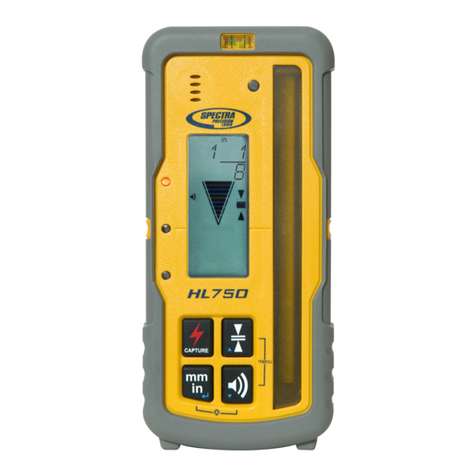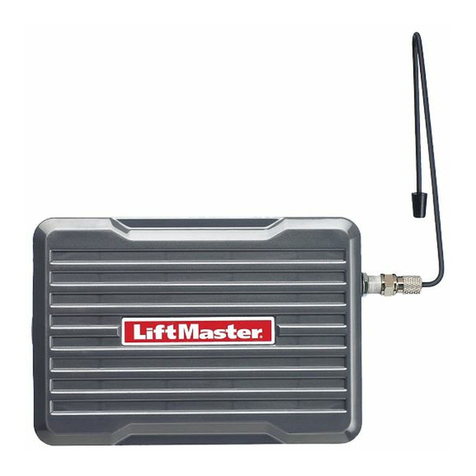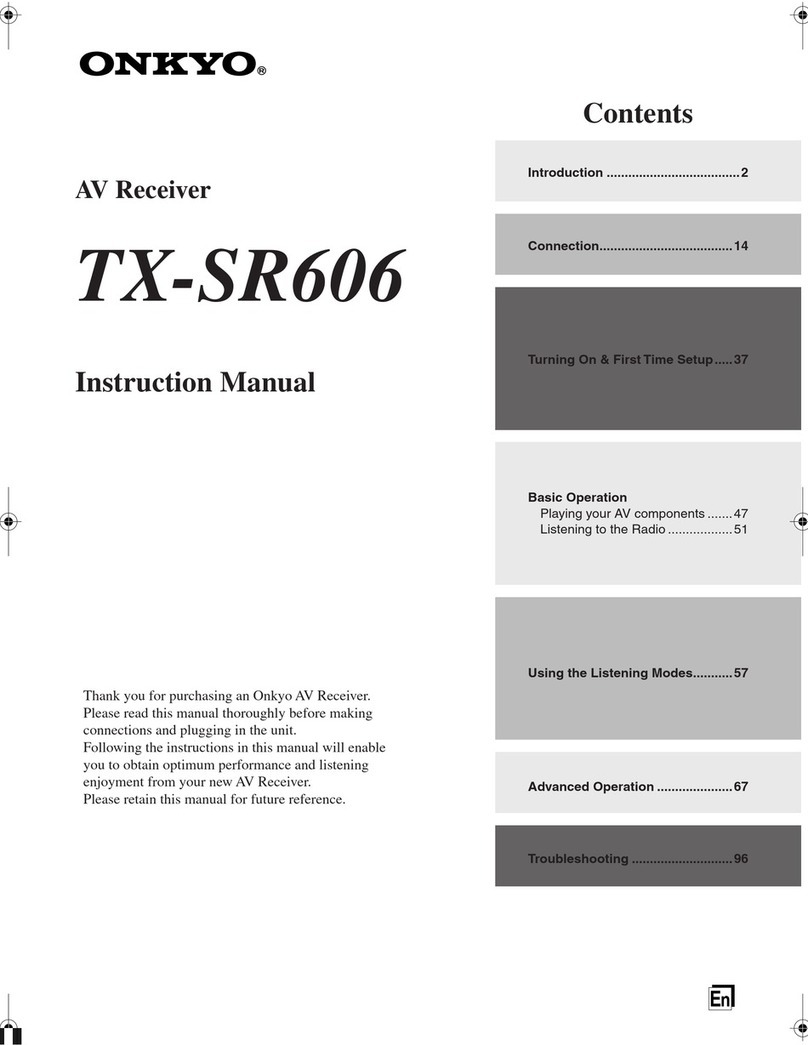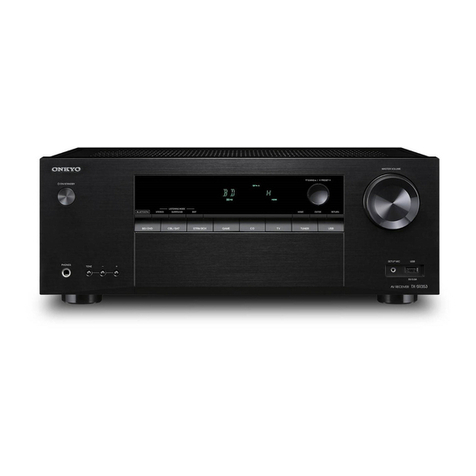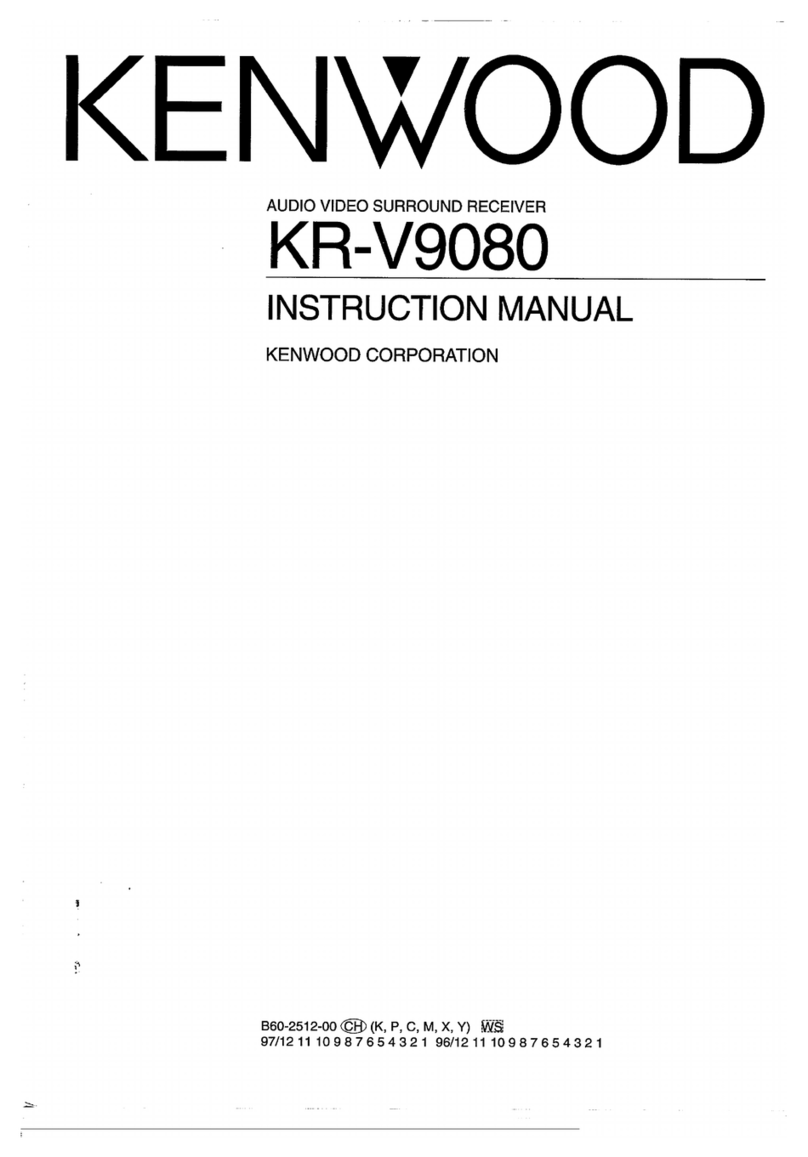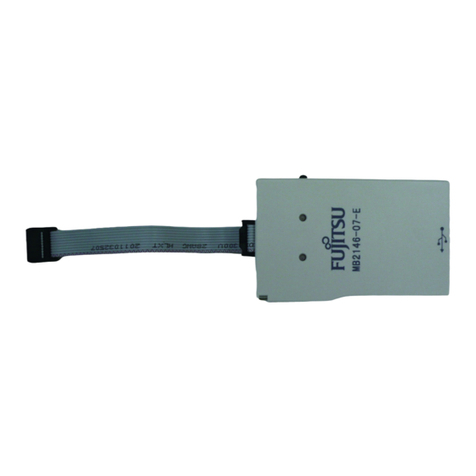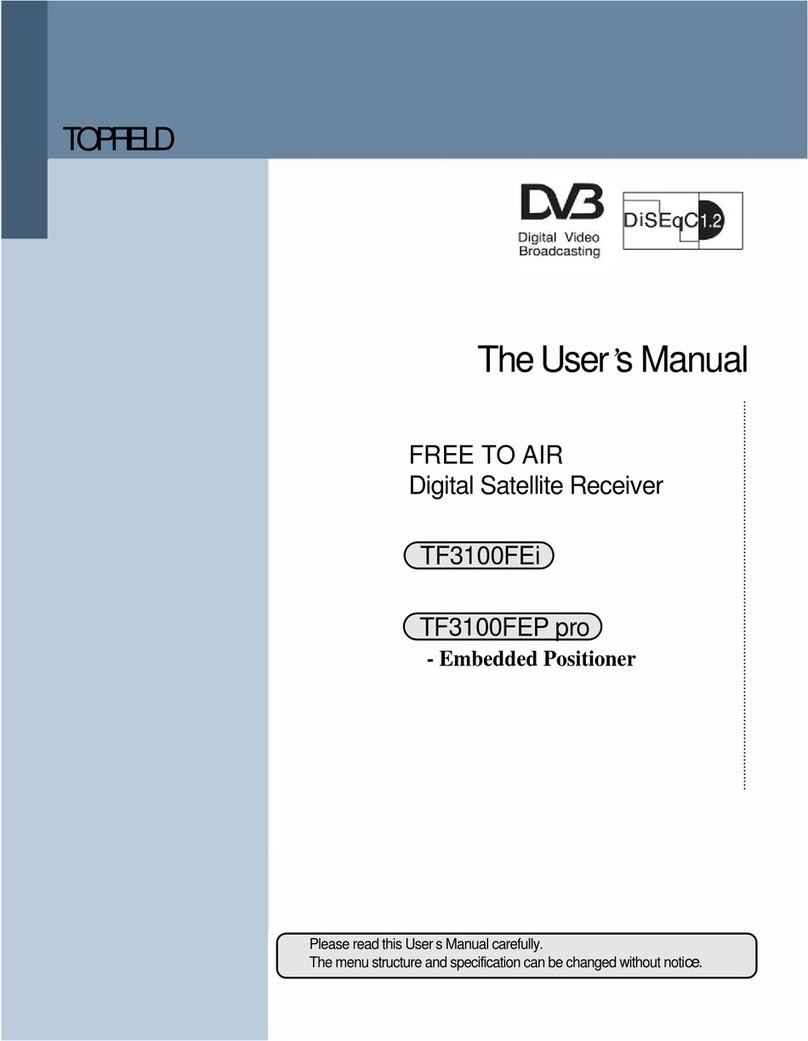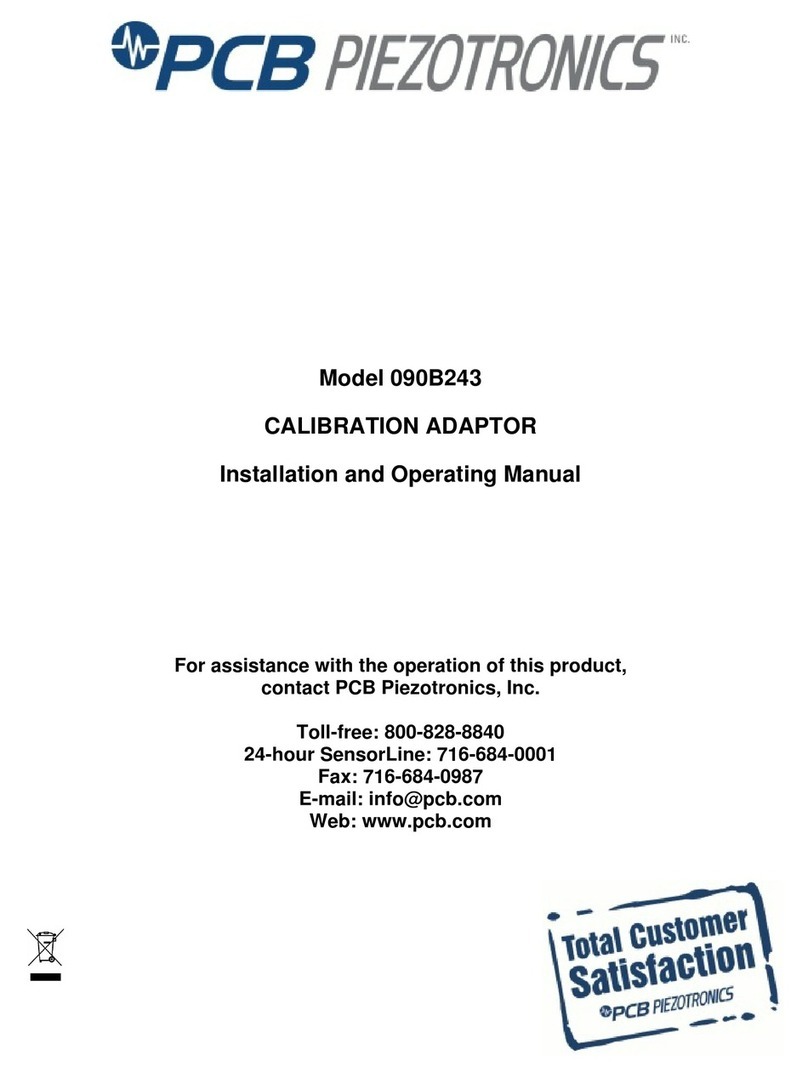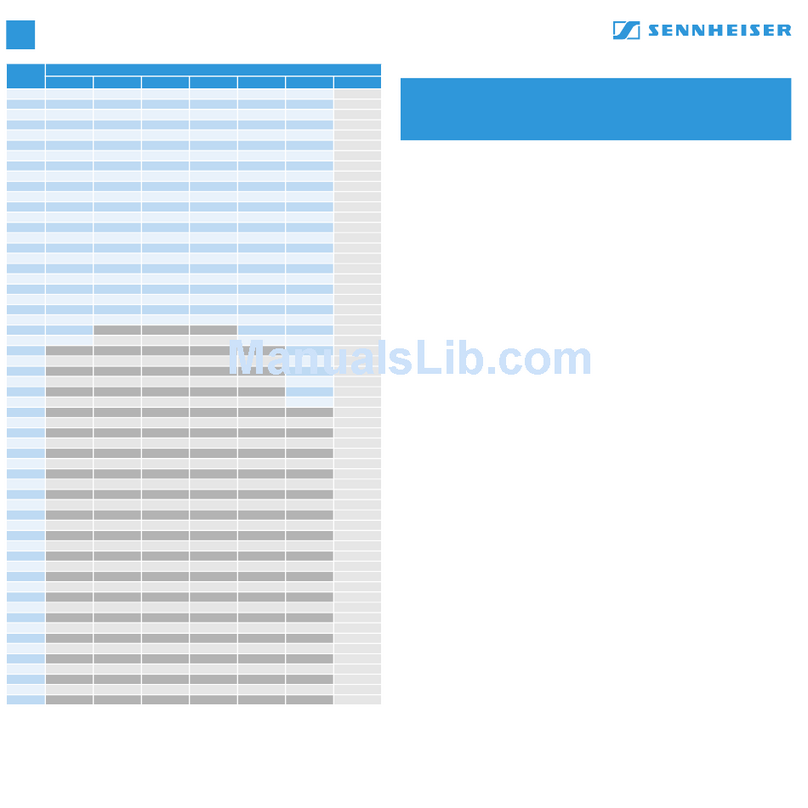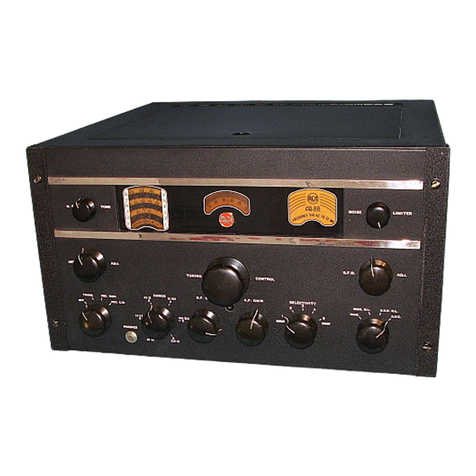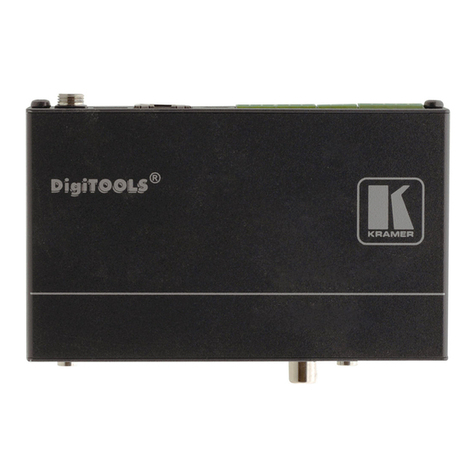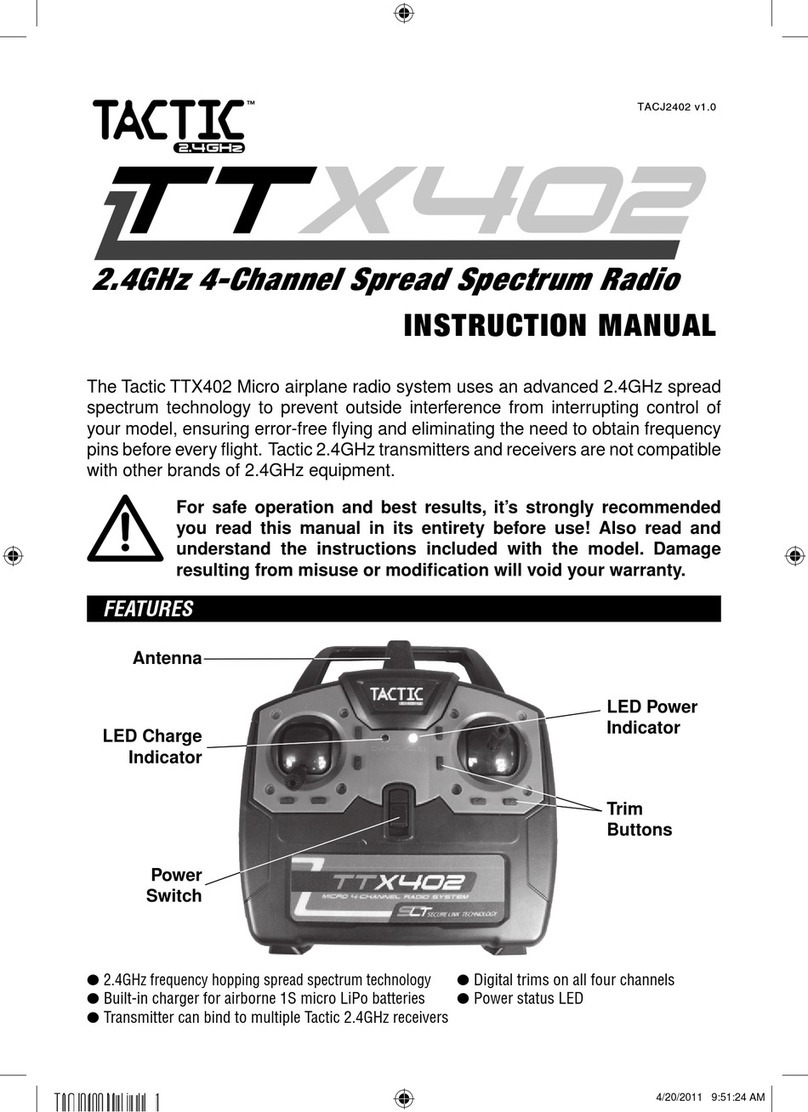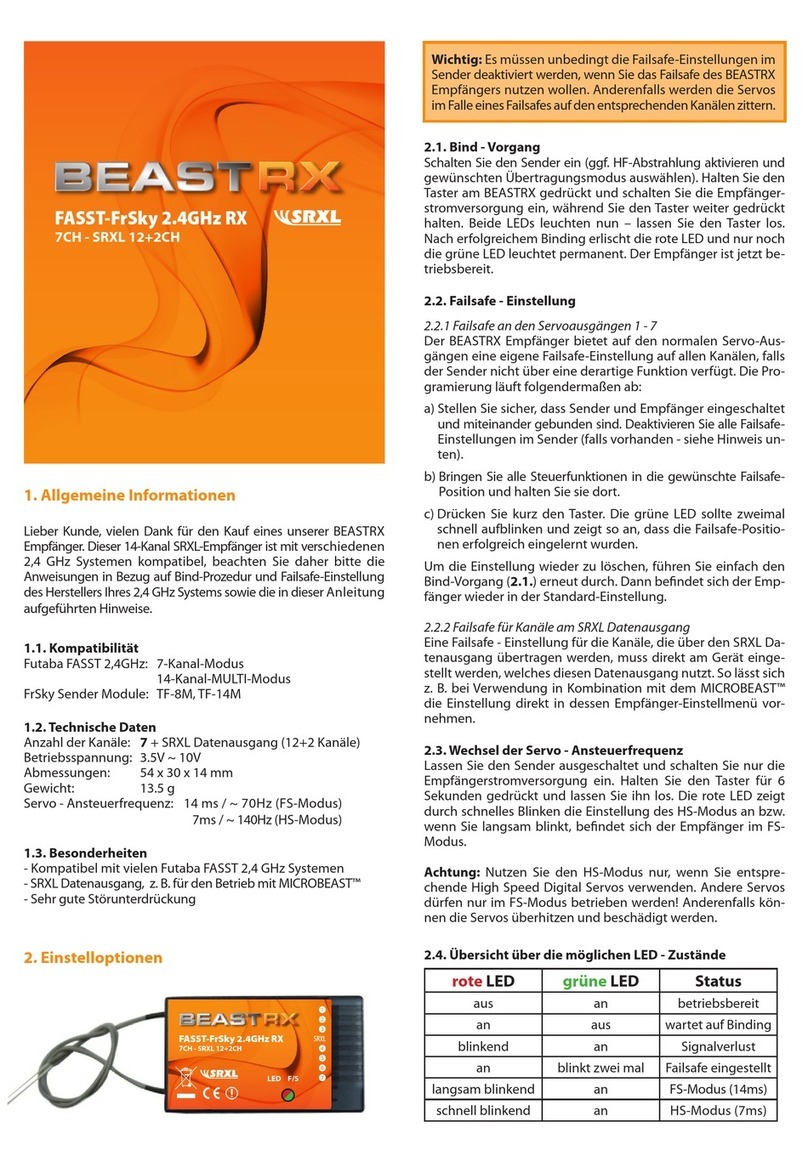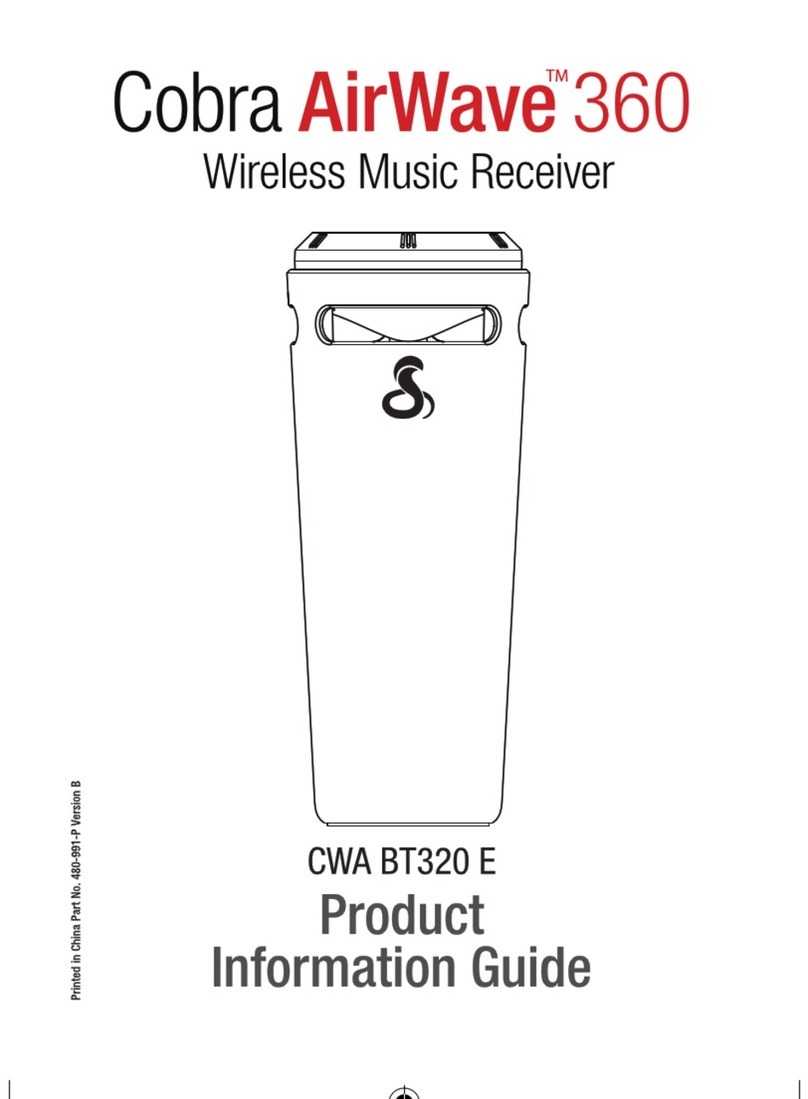Spectra Precision SP60 GNSS User manual

User Guide
SP60 GNSS Receiver
August 2016 Release

Legal Notices
©2015-2016 Trimble Navigation Limited. All
rights reserved.
All product and brand names mentioned in this
publication are trademarks of their respective hold-
ers.
SP60 User Guide, Rev. C, August 2016.
Limited Warranty Terms and Conditions
Product Limited Warranty. Subject to the terms and
conditions set forth herein, Trimble Navigation Lim-
ited (“Trimble”) warrants that for a period of (1)
year from date of purchase this Spectra Precision
product (the “Product”) will substantially conform
to our publicly available specifications for the Prod-
uct and that the hardware and any storage media
components of the Product will be substantially
free from defects in materials and workmanship.
Product Software. Product software, whether built
into hardware circuitry as firmware, provided as a
standalone computer software product, embedded
in flash memory, or stored on magnetic or other me-
dia, is licensed solely for use with or as an integral
part of the Product and is not sold. The terms of the
end user license agreement govern the use of the
Product Software, including any differing limited
warranty terms, exclusions and limitations, which
shall control over the terms and conditions set forth
in the limited Product warranty.
Warranty Remedies. If the Product fails during the
warranty period for reasons covered by this limited
warranty and you notify us of such failure during
the warranty period, we will repair OR replace the
nonconforming Product with new, equivalent to
new, or reconditioned parts or Product, OR refund
the Product purchase price paid by you, at our op-
tion, upon your return of the Product in accordance
with our product return procedures then in effect.
Notices
Class B Statement - Notice to Users. This equip-
ment has been tested and found to comply with the
limits for a Class B digital device, pursuant to Part
15 of the FCC Rules. These limits are designed to
provide reasonable protection against harmful in-
terference in a residential installation. This equip-
ment generates, uses and can radiate radio
frequency energy and, if not installed and used in
accordance with the instructions, may cause harm-
ful interference to radio communication. However,
there is no guarantee that interference will not oc-
cur in a particular installation. If this equipment
does cause harmful interference to radio or televi-
sion reception, which can be determined by turning
the equipment off and on, the user is encouraged
to try to correct the interference by one or more of
the following measures:
• Reorient or relocate the receiving antenna.
• Increase the separation between the equip-
ment and the receiver.
• Connect the equipment into an outlet on a cir-
cuit different from that to which the receiver is
connected.
• Consult the dealer or an experienced radio/TV
technician for help.
Changes or modifications not expressly approved by
the manufacturer or registrant of this equipment
can void your authority to operate this equipment
under Federal Communications Commission rules.
Canada
The digital apparatus does not exceed the Class B
limits for radio noise emissions from digital appara-
tus as set out in the radio interference regulations
of the Canadian Department of Communications.
Le présent appareil numérique n’émet pas de
bruits radioélectriques dépassant les limites
applicables aux appareils numériques de Classe B
prescrites dans le règlement sur le brouillage
radioélectrique édicté par le Ministère des
Communications du Canada.
Europe
This product has been tested and found to comply
with the requirements for a Class B device pursuant
to European Council Directive 89/336/EEC on
EMC, thereby satisfying the requirements for CE
Marking and sales within the European Economic
Area (EEA). These requirements are designed to
provide reasonable protection against harmful in-
terference when the equipment is operated in a res-
idential or commercial environment.
Notice to Our European Union Customers
For product recycling instructions and more infor-
mation, please go to http://www.spectrapreci-
sion.com/footer/weee-and-rohs/.
Recycling in Europe: To recycle Spectra Precision
WEEE (Waste Electrical and Electronic Equipment
products that run on electric power), call +31 497
53 24 30 and ask for the “WEEE Associate”. Or,
mail a request for recycling instructions to:
Trimbl e E u r ope BV
c/o Menlo Worldwide Logistics
Meerheide 45
5521 DZ Eersel, NL
Declaration of Conformity
We, Spectra Precision,
declare under sole responsibility that the product:
SP60 GNSS receiver
complies with Part 15 of FCC Rules.
Operation is subject to the following two condi-
tions:
(1) this device may not cause harmful interference,
(2) and this device must accept any interference
received, including interference that may cause
undesired operation.

Rechargeable Lithium-ion Battery
This receiver uses a rechargeable Lithium-ion bat-
tery.
WARNING - Do not damage the rechargeable Lithi-
um-ion battery. A damaged battery can cause an ex-
plosion or fire, and can result in personal injury
and/or property damage. To prevent injury or dam-
age:
• Do not use or charge the battery if it appears
to be damaged. Signs of damage include, but
are not limited to, discoloration, warping, and
leaking battery fluid.
• Do not expose the battery to fire, high tem-
perature, or direct sunlight.
• Do not immerse the battery in water.
• Do not use or store the battery inside a vehicle
during hot weather.
• Do not drop or puncture the battery.
• Do not open the battery or short-circuit its con-
tacts.
WARNING - Avoid contact with a rechargeable Lith-
ium-ion battery if it appears to be leaking. Battery
fluid is corrosive, and contact with it can result in
personal injury and/or property damage. To prevent
injury or damage:
• If a battery leaks, avoid contact with the bat-
tery fluid.
• If battery fluid gets into your eyes, immediate-
ly rinse your eyes with clean water and seek
medical attention. Do not rub your eyes!
• If battery fluid gets onto your skin or clothing,
immediately use clean water to wash off the
battery fluid.
WARNING - Charge and use the rechargeable Lith-
ium-ion battery only in strict accordance with the
instructions. Charging or using the battery in unau-
thorized equipment can cause an explosion or fire,
and can result in personal injury or/and equipment
damage. To prevent injury or damage:
• Do not charge a battery if it appears to be dam-
aged or leaking.
• USE EXCLUSIVELY the dual-battery charger
(P/N 53018010-SPN) with the AC/DC power
block (model ADP-65JH AB, P/N 78650) to
charge the SP60 Lithium-ion battery. See in-
structions in this guide. These two devices are
part of the SP60 standard accessories list.
CHARGE THE BATTERY ONLY IN THE TEM-
PERATURE RANGE 0° to +40°C (32° to
104°F), at a maximum altitude of 2,000 me-
ters (6,562 feet).
• Discontinue charging a battery that gives off
extreme heat or a burning odor.
• Use the battery only in Spectra Precision
equipment that is specified to use it.
• Use the battery only for its intended use and
according to the instructions in the product
documentation.
Disposing of Rechargeable Lithium-ion Battery
Discharge Lithium-ion battery before disposing of
it. When disposing of a battery, be sure to do so in
an environmentally sensitive manner. Adhere to any
local and national regulations concerning battery
disposal or recycling.
Receiver Use and Care
The receiver can withstand the rough treatment
that typically occurs in the field. However, the re-
ceiver is a high-precision electronic instrument and
should be treated with reasonable care.
CAUTION - Operating or storing the receiver out-
side the specified temperature range can damage
it. For more information, see Physical Specifica-
tions in this guide.
High-power signals from a nearby radio or radar
transmitter can overwhelm the receiver circuits.
This does not harm the instrument, but it can pre-
vent the receiver from functioning correctly. Do not
use the receiver within 400 meters (1312 feet) of
powerful radar, television or other transmitters.
Low-power transmitters such as those used in cell
phones and two-way radios do not normally inter-
fere with receiver operations.
For more information, contact your Spectra Preci-
sion distributor.
Bluetooth Radio
The radiated output power of the wireless radio is
far below the FCC radio-frequency exposure limits.
Nevertheless, the wireless radio shall be used in
such a manner that the Spectra Precision receiver
is 20 cm or further from the human body.
The internal wireless radio operates within guide-
lines found in radio-frequency safety standards and
recommendations, which reflect the consensus of
the scientific community. Spectra precision there-
fore believes the internal wireless radio is safe for
use by consumers.
The level of energy emitted is far less than the elec-
tromagnetic energy emitted by wireless devices
such as mobile phones. However, the use of wire-
less radios may be restricted in some situations or
environments, such as on aircraft. If you are unsure
of restrictions, you are encouraged to ask for autho-
rization before turning on the wireless radios.
COCOM Limits
The US Department of Commerce requires that all
exportable GNSS products contain performance
limitations so that they cannot be used in a manner
that could threaten the security of the United
States.
The following limitation is implemented on the re-
ceiver: Immediate access to satellite measure-
ments and navigation results is disabled when the
receiver’s velocity is computed to be greater than
1000 knots, or its altitude is computed to be above
17,000 meters (59,055 feet). The receiver contin-
uously resets until the COCOM situation is cleared.
Technical Assistance
If you have a problem and cannot find the informa-
tion you need in the product documentation, con-
tact your local distributor. Alternatively, request
technical support using the Spectra Precision web-
site at www.spectraprecision.com.
Your Comments
Your feedback about the supporting documentation
helps us improve it with each revision. Email your
comments to documentation_feedback@spectra-
precision.com.

UHF Radios
Regulations and Safety. The receiver may be fitted
with an internal radio as an option. It can also be
connected to an external UHF radio.
Regulations regarding the use of Ultra High Frequen-
cy (UHF) radio-modems vary greatly from country to
country. In some countries, the UHF kit may be used
without obtaining an end-user license. Other coun-
tries require end-user licensing. For licensing infor-
mation, consult your local Spectra Precision dealer.
Before operating the receiver with the UHF kit, deter-
mine if authorization or a license to operate the UHF
kit is required in your country. It is the end-user’s re-
sponsibility to obtain an operator’s permit or license
for the location or country of use.
Exposure to RF energy is an important safety consid-
eration. The FCC has adopted a safety standard for
human exposure to radio-frequency electromagnetic
energy.
Proper use of this radio modem results in exposure
below government limits. The following precautions
are recommended:
• DO NOT operate the transmitter when someone
is within 20 cm (7.8 inches) of the antenna.
• DO NOT collocate (place within 20 cm) the ra-
dio antenna with any other transmitting device.
• DO NOT operate the transmitter unless all RF
connectors are secure and any open connectors
are properly terminated.
• DO NOT operate the equipment near electric
blasting caps or in an explosive atmosphere.
• All equipment must be properly grounded ac-
cording to Spectra Precision installation in-
structions for safe operation.
• All equipment should be serviced only by a qual-
ified technician.

Table of Contents
About Spectra Precision SP60 .............................................................1
SP60 Packout.....................................................................................2
Basic Supply.........................................................................2
UHF Kit PN92673-00 ...........................................................2
Office Power Kit P/N 94336 ..................................................3
Field Power Kit P/N 94335 ....................................................3
Standard Items......................................................................4
Other Optional Accessories .....................................................5
Firmware Options ..................................................................5
Trimble RTX Corrections Services............................................5
External Radio Kits & Antennas ..............................................6
Discover Your New Equipment .............................................................7
Front Panel ...........................................................................7
Phase Center Location ...........................................................8
Height Mark ..........................................................................9
Buzzer................................................................................10
Using SP60 for the First Time ............................................................11
Charging the Battery ............................................................11
Inserting the Battery ............................................................12
Setting up the SP60 ............................................................13
Running a Survey ................................................................13
Ending a Survey ..................................................................13
SP60 Control Panel Description .........................................................14
Introducing SP60 as Rover ...............................................................17
Network Rover.....................................................................17
Rover Using Local Base........................................................17
L-Band Rover (Trimble RTX) .................................................18
Introducing SP60 as Local Base ........................................................19
Possible Local Base Configurations .......................................19
Internal vs. External Power Source ........................................19
Configuring SP60.............................................................................20
With Survey Pro...................................................................20
With FAST Survey................................................................21
Using the UHF Kit Option ...................................................................23
Installing the UHF Module into the Receiver ..........................24
Configuring the UHF Module ................................................25
Completing Rover Radio Setup..............................................26
Completing Base Radio Setup With External UHF Antenna ......27
Completing Base Radio Setup With Internal UHF Antenna.......28
Anti-Theft and Startup Protections......................................................29
Anti-Theft Protection............................................................29
Purpose...........................................................................29
Enabling/Disabling the Anti-Theft Protection.......................29

How the Receiver Operates With the Anti-Theft On ..............29
What the Anti-Theft Protection Does Initially.......................29
What Events Will Trigger a Theft Alarm? .............................29
What Will Happen When a Theft is Detected?......................30
What if the Thief Removes the Battery? ..............................30
Disabling Anti-Theft Before Turning Off the Receiver ...........30
Lost your Anti-Theft Password?..........................................30
Startup Protection ...............................................................31
Purpose...........................................................................31
Enabling/Disabling Startup Protection ................................31
How SP60 Operates with Startup Protection Active .............31
Difference Between Startup and Anti-Theft Protections ........31
Shared Resources.............................................................31
Can Anti-Theft and Startup Protections Be Both Active?.......31
Using Anti-Theft and Startup Protections in Survey Pro ..........32
Enabling/Disabling the Anti-Theft Protection.......................33
Using Anti-Theft and Startup Protections in FAST Survey .......34
Collecting Raw Data Files.................................................................. 35
Raw Data Logging in Standalone Mode ..................................35
Raw Data Logging from Field Software...................................35
Downloading Raw Data Files to a USB Key.............................36
Downloading Raw Data Files Directly to a Computer................36
Post-Processing Raw Data Files.............................................36
Using the SP60 From an Android Platform.......................................... 37
Connecting an Android Platform to the SP60 .........................37
Installing SPace ..................................................................37
Making SP60 the “Position Provider” ....................................37
More Information about SPace ..............................................37
Appendix......................................................................................... 38
SP Loader Software Utility....................................................38
Installing SP Loader .........................................................38
Getting Started With SP Loader .........................................38
Upgrading Receiver Firmware ............................................39
Installing a Firmware Option..............................................40
Validating RTX Subscription ..............................................41
Reading Receiver Warranty Expiration Date.........................41
SP File Manager Software Utility ..........................................42
Installing SP File Manager ................................................42
Connecting SP60 to your Computer ...................................42
Getting Started With SP File Manager ................................45
Establishing a Connection with the Receiver .......................46
Copying Files to the Office Computer .................................46
Deleting Files from the Receiver ........................................47
Restoring Factory Settings ....................................................47
Technical Specifications.......................................................48
GNSS Characteristics .......................................................48
Real-Time Accuracy (RMS) ...............................................48
Subscriptions to Trimble RTX Corrections
Services Supported by SP60 .............................................49
Real-Time Performance ....................................................49
Post-Processing Accuracy (RMS) .......................................49
Data Logging Characteristics .............................................49


English
1
About Spectra Precision SP60
Challenging environments will no longer be a nightmare for
you or your crew: The Spectra Precision SP60 is a new
generation GNSS receiver offering a high level of flexibility. It
is designed to cover any survey demand from simple post-
processing, through standard UHF or unique Long-Range
Bluetooth base and rover systems to sophisticated RTK and
Trimble RTX rover solutions.
Combining the unique all-signals tracking and processing Z-
Blade GNSS centric technology and L-band capability for
satellite-delivered Trimble corrections RTX service, the SP60
receiver provides the most reliable measurements and the
highest possible accuracy under any conditions anywhere in
the world.
The key features of the SP60 are:
• Extended survey capability
• New 240-channel 6G ASIC
• Z-Blade GNSS-centric
• Internal TRx UHF radio (option)
• Long-Range Bluetooth
• Anti-theft and startup protections

English
2
SP60 Packout
Basic Supply NOTE: Spectra Precision reserves the right to make changes
to the lists of items provided below without prior notice.
Depending on the ordered SP60 single receiver kit, the basic
supply will be as follows.
*: 410-430 MHz, 2 W TRx
**: 430-470 MHz, 2 W TRx
UHF Kit
PN92673-00
(1) When applicable, the items part of this kit may be ordered separately as
spare parts, using the P/Ns specified in this column.
(2) DOES NOT include the UHF antenna. See other optional accessories
below.
SP60 Single Receiver Kit P/N UHF
Kit
Office
Power
Kit
Field
Power
Kit
Standard
Items
SP60 L1 GPS 104234-00 •
SP60 L1 GNSS 104234-01 •
SP60 L1/ L2 GPS 104234-02 •
SP60 L1/L2 GNSS 104234-03 •
SP60 GIS 7/2 (L1/L2 GPS only) 104234-85 •
SP60 GIS 30/30 (L1/L2 GPS only)
104234-80 •
SP60 L1/L2 GNSS+UHF radio* 104234-10 • • •
SP60 L1/L2 GNSS+UHF radio** 104234-50 • • •
Item Picture Spare Part (1)
UHF Module (2) (Not Applicable)
Base Pole Extension, 25 cm (9.5”) long, with
oblong aperture 95672
Rover Range Pole, 2 m (6.5 ft) long, fiber-
glass, two parts, with specific tapping on top
part
89937-10
Soft Bag for Range Pole 95860
T25 Torx Screwdriver, “L” shaped (Not Applicable)

English
3
Office Power Kit
P/N 94336
(1) When applicable, the items part of this kit may be ordered separately as
spare parts, using the P/Ns specified in this column.
Field Power Kit
P/N 94335
(1) When applicable, the items part of this kit may be ordered separately as
spare parts, using the P/Ns specified in this column.
(2) If you need to change the fuse on this cable, please use the same type of
fuse as the one originally provided (15 A @32 V). This is mandatory.
Item Picture Spare Part (1)
Power/Data cable, 1.5 m, DB9-f to OS/7P/M
to SAE 59044-10-SPN
Adapter cable, 0.15 m, SAE to DC socket
(2.1 mm) 88769-SPN
RS232-to-USB adapter cable 90938-SPN
Item Picture Spare Part (1)
Power cable, 0.6 m, 7P Lemo to SAE 95715
Power cable, 1.8 m, SAE to battery clips (2) 83223-02-SPN

English
4
Standard Items
(1) When applicable, the items part of the standard packout may be ordered
separately as spare parts, using the P/Ns specified in this column.
NOTE: The SP60 User Guide may be downloaded from:
http://www.spectraprecision.com/eng/sp60.html#.VdWdb5dWIQo
Item Picture Spare Part (1)
SP60 GNSS receiver (Not applicable)
Li-Ion Battery, 2.6 Ah, 7.4 V, 19.2 Wh 92600-10
Dual Li-Ion Battery Charger (does not
include AC/DC power supply and
cable)
(Not applicable)
AC/DC Power Block, 65 W, 19 V,
3.42 A, 100-240 VAC 78650-SPN
Power Cord Kit (four types) for use with
AC/DC Power Block 78651-SPN
Tape Measure, 3.6 m (12 feet) 93374
Pole Extension, 7 cm, for use on tripod 88400-50-SPN
USB-to-USB mini Cable 67901-11
Soft bag, field transport 206490-ASH
Product Software and Documentation
Leaflet, Quick Start Guide, Anti-theft
sticker.
(Not applicable)
Two-year warranty (Not applicable)

English
5
Other Optional
Accessories
Firmware Options These firmware options can be ordered separately.
Trimble RTX
Corrections
Services
The services below can be used in the SP60 after you have
subscribed to one of them:
• CenterPoint RTX®
• FieldPoint RTX®
• RangePoint RTX®
• ViewPoint RTX®
Refer to Technical Specifications on page 48 and next ones
so you can choose the type of Trimble RTX service you should
subscribe to, depending on the level of accuracy you need.
To subscribe to one of these services, do the following:
• Contact your dealer, who will help you make the necessary
steps to get an RTX subscription from Trimble.
Item Ordering P/N: Picture
Large soft bag, field transport 95858
Universal Hard Shell, gray, Spectra Precision:
•Bare
• With two soft bags
• With one large soft bag
104342-02
104342-03
104342-04
UHF whip antenna, ¼ wave, with TNC adapter:
• 410-430 MHz
• 430-470 MHz
67410-12
67410-11
Coaxial adapter cable (for use with P/N 95672) 96845
Y cable, receiver-to-PacCrest HPB & Battery,
3.0 m (OS7P to 1S5P) PCC-A02507
Dual Li-Ion battery charger kit (including cable
and power supply) 53021010-SPN
Firmware Option P/N Features Added
SP60 GNSS L1 105759-01 GLONASS, Galileo, Beidou (L1, E1, B1)
SP60 L2 105759-02 L2 GPS, L2/L3 GLONASS, Galileo E5B, Beidou
B2, L2 QZSS
SP60 GNSS + L2 105759-03 L2 GPS, L1/L2/L3 GLONASS, L2 QZSS, Gali-
leo E1, E5B, Beidou B1, B2
7/2 109162-01 Dithered RTK 7/2: 7cm Horizontal Precision,
2cm Vertical Precision.
RTK 109163-01 Full RTK option

English
6
• Once you get your subscription, refer to Validating RTX
Subscription on page 41 to make it active in your SP60.
IMPORTANT: The best accuracy the SP60 can deliver
depends on the RTK option installed, regardless of the
subscribed RTX service. For example, it wouldn’t make sense
to purchase a subscription to CenterPoint RTX if the receiver
can only operate in 30/30 RTK.
External Radio Kits
& Antennas Item Ordering P/N: Picture
UHF whip antenna, Procom, half-wave, with
TNC adapter:
• 410-430 MHz
• 430-450 MHz
• 450-470 MHz
C3310190
C3310196
C3310188
ADL Vantage Pro Accessories Kit. Choose
P/N according to UHF band used:
• 450-470 MHz
• 430-450 MHz
• 410-430 MHz
The kit includes the following items:
• Unity-gain antenna (compatible with chosen
band, see above)
• Range pole mount
• Tripod mount system
• HPB-Battery bag with cables (specific to
ADL Vantage Pro)
• HPB-Programming cable
(ADL Vantage Pro unit NOT included in the kit.)
87400-10
87400-20
87410-10
ADL Vantage Accessories Kit. Choose P/N
according to UHF band used:
• 450-470 MHz
• 430-450 MHz
• 410-430 MHz
The kit includes the following items:
• Unity-gain antenna (compatible with chosen
band, see above)
• Range pole mount
• Tripod mount system
• HPB-Battery bag with cables (specific to
ADL Vantage)
• HPB-Programming cable
(ADL Vantage unit NOT included in the kit.)
87330-10
87330-20
87310-10

English
7
Discover Your New Equipment
Take a few minutes to discover your new SP60.
Front Panel
•[1]: Control panel, consists of the following items, from
left to right (see picture):
–[2]: Bluetooth LED
–[3]: Data recording LED
–[4]: Power LED
–[5]: Power/Configuration button
–[6]: Satellite tracking/Position LED
–[7]: UHF Radio LED
See SP60 Control Panel Description on page 14 for more
information.
•[8]: 5/8” threaded insert for rod mounting. This part is
securely mounted on a removable plate, thus making up
an assembly that can be replaced with a UHF module
(optional accessory) fitted with its own, specific threaded
hole and central coaxial socket for antenna connection
(see Using the UHF Kit Option on page 23).
•[9]: Power/data connector (DC input + RS232 serial port
A). The connector socket is protected by a black rubber
cap attached to the receiver case. Always keep the
protection cap on when the connector is not used. This
cap is a non-polarized one.
IMPORTANT: When you connect a cable to that connector,
be sure you align the red markings (a red dot on the plug,
a red line on the socket) before pushing the Lemo plug in.
[1]
[8] [9]
[10]
[11]
[12]
[13]
[2] [4] [7]
[3] [6][5]

English
8
Conversely, when it’s time to disconnect the Lemo plug,
please use the attached metal strap to pull the plug out.
•[10]: Battery compartment.
CAUTION - THE TRAPDOOR SHOULD BE REMOVED ONLY
FOR INSERTING OR REPLACING A BATTERY. THE REST
OF THE TIME, PLEASE ALWAYS KEEP FULLY CLOSE
.
•[11]: Mini-USB connector (standard USB 2.0, up to 12
MHz, OTG (host & device)).
•[12]: Shock absorber making up a robust protection belt
for the receiver against drops to the ground. The height
mark is nested in the shock absorber. See below.
•[13]: Height mark.
Phase Center
Location
See diagram below. These are relative measurements.
The field software usually calculates the real height of the
instrument, based on the location of the L1 phase center.
Whether you provide a vertical or slant measurement of the
antenna base (ARP), the field software you are using should
be able to deduce the real height of the instrument, using the
pre-loaded dimensional parameters (antenna radius, etc.)
specific to the model of GNSS antenna used.
In the case of a slant measurement, the software will also use
the radius of the antenna to determine the instrument height.
L1 68.7 mm
L2 65.3 mm

English
9
Height Mark The height mark ([8]) is nested in the shock absorber, near
the serial connector.
When the receiver is mounted on a tripod – for use as a base
for example – making a slant measurement to determine the
instrument height is often more convenient than making a
vertical measurement from the ground mark to the antenna
base.
In this case, the height mark can be used to hook the measure
tape (standard accessory) so you can unroll the tape down to
the ground mark and conveniently measure the distance
between these two points. However because the housing of
the measure tape is inserted in the path between the two
points, you should make the following correction to obtain the
real value of slant measurement:
Slant Measurement = Measured Distance + Delta L
Where “Delta L” is the length of the tape measure housing.
Delta L= 0.073 m or 0.2396 ft (2 7/8 inches), as mentioned on the housing.
When the field software requests your input to determine the
instrument height, you will then choose to enter the slant
measurement, rather than the vertical one. The software will
then be able to deduce the real height of the instrument from
the known dimensional parameters of the antenna and the
slant measurement you will have entered.
73 mm
0.2396 ft
Measured distance

English
10
Buzzer The buzzer can be heard in the following cases:
•Bluetooth:
– When the data collector establishes a Bluetooth
connection with the receiver,
– When this connection gets lost.
•Internal battery: When the internal battery gets low (less
than 20% of nominal charge), the buzzer sounds briefly.
When less than 10% is left, the buzzer sounds
continuously for a few seconds until the receiver safely
shuts down.
•Power button: After a long press (2-3 seconds) on this
button:
– To start or stop data logging (see also below).
– To enter the radio mode
– To power off the receiver.
In all three cases, hearing the buzzer means your request
has been acknowledged and you can release the button.
•When entering the radio mode.
•Enabling/Disabling Data Logging from the Power button:
The buzzer will sound at the end of the 2 or 3 seconds of
holding down the Power button to either start or stop data
logging (see also Raw Data Logging in Standalone Mode
on page 35).
•Downloading Files: After connecting a USB key to the
receiver, the buzzer will first sound when the USB key is
ready for use, and then after you have pressed briefly the
Power button to start downloading files to the USB key.
Another beep will finally be heard when the file transfer is
complete (see Downloading Raw Data Files to a USB Key
on page 36).

English
11
Using SP60 for the First Time
WARNING - This receiver uses a rechargeable Lithium-ion
battery. To avoid personal injury or equipment damage, make
sure that you read and understand the safety information at
the front of this guide.
The battery is shipped partially charged. Depending on the
time elapsed since then, the remaining charge may be even
less. For this reason, you should first recharge the battery
completely before first use. (See warnings and safety
information at the front of this guide.)
Charging the
Battery
1. Set up the battery charger as follows:
– Connect the output cable ([1]) of the AC/DC power
block ([2]) to the battery charger input ([3]).
– Choose the power cord ([4]) that is suitable for your
country.
– Connect the end of the power cord to the AC/DC block
input ([5]), and the other to a power outlet ([6]). This
powers up the battery charger, causing the two LEDs
[8] to turn solid red.
2. Insert the battery ([7]) into one of the two slots on the
battery charger (give the right orientation to the battery).
When the battery is detected, the corresponding red LED
([8]) will go off and the nearby LED ([9]) will start blinking
green to indicate that the battery is being charged.
3. Charging the battery will take a few hours. When the
battery reaches full charge, the LED ([9]) will turn solid
green (see also printed instructions provided with the
charger).
4. Remove the battery from the charger when fully charged.
NOTE 1: The battery may be left on the charger for an
indefinite period of time without causing any damage to
the charger or the battery.
NOTE 2: If you also have a spare battery, the two batteries
can be inserted onto the charger. The batteries will be
charged one after the other.
[1]
[2]
[3]
[4]
[5]
[6]
[7]
[9]
[8][8]
[9]

English
12
Inserting the
Battery
As opposed to previous receiver models, the battery trapdoor
of the SP60 can entirely be detached from the receiver case.
As explained below, the battery is first inserted into the inner
side of the trapdoor and then inserted into the receiver case,
together with the trapdoor.
• Open the battery trapdoor: Using your thumb and middle
finger, press on the two locks to free and remove the
trapdoor ([10]).
• Place the trapdoor upside down on a horizontal plane,
curved edge to the right. Place the battery nearby, electric
contacts upward, and as shown ([11])
• Take the battery and insert one of its end into the trapdoor
([12]), then gently push the other end until the battery is
fully inserted ([13]).
The trapdoor is fitted with an auto-locking system ([14])
at both ends of the battery that will keep the battery firmly
in position once fully inserted.
• Hold the receiver case upside down in one hand, take the
battery and trapdoor in the other hand and insert them
into the battery compartment ([15]). A click can be heard
when the trapdoor gets locked into the receiver case.
Note: To remove the battery from the trapdoor, gently push aside one
of the locking legs to free that end of the battery. Then it’s easy taking
the battery out of the trapdoor.
[10]
[11]
[14]
[15]
[12]
[13]
Table of contents
Other Spectra Precision Receiver manuals
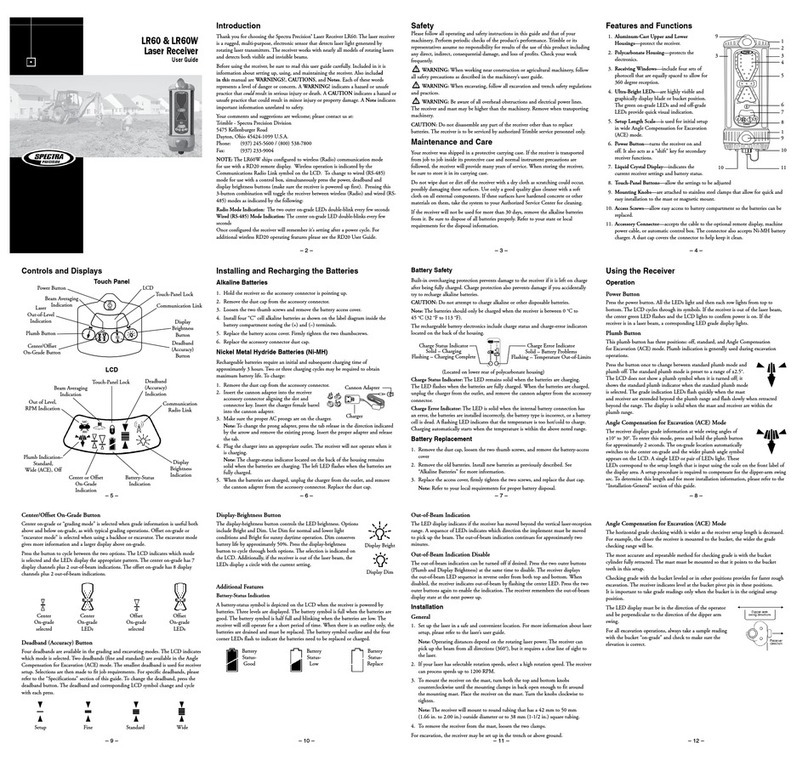
Spectra Precision
Spectra Precision LR60 User manual
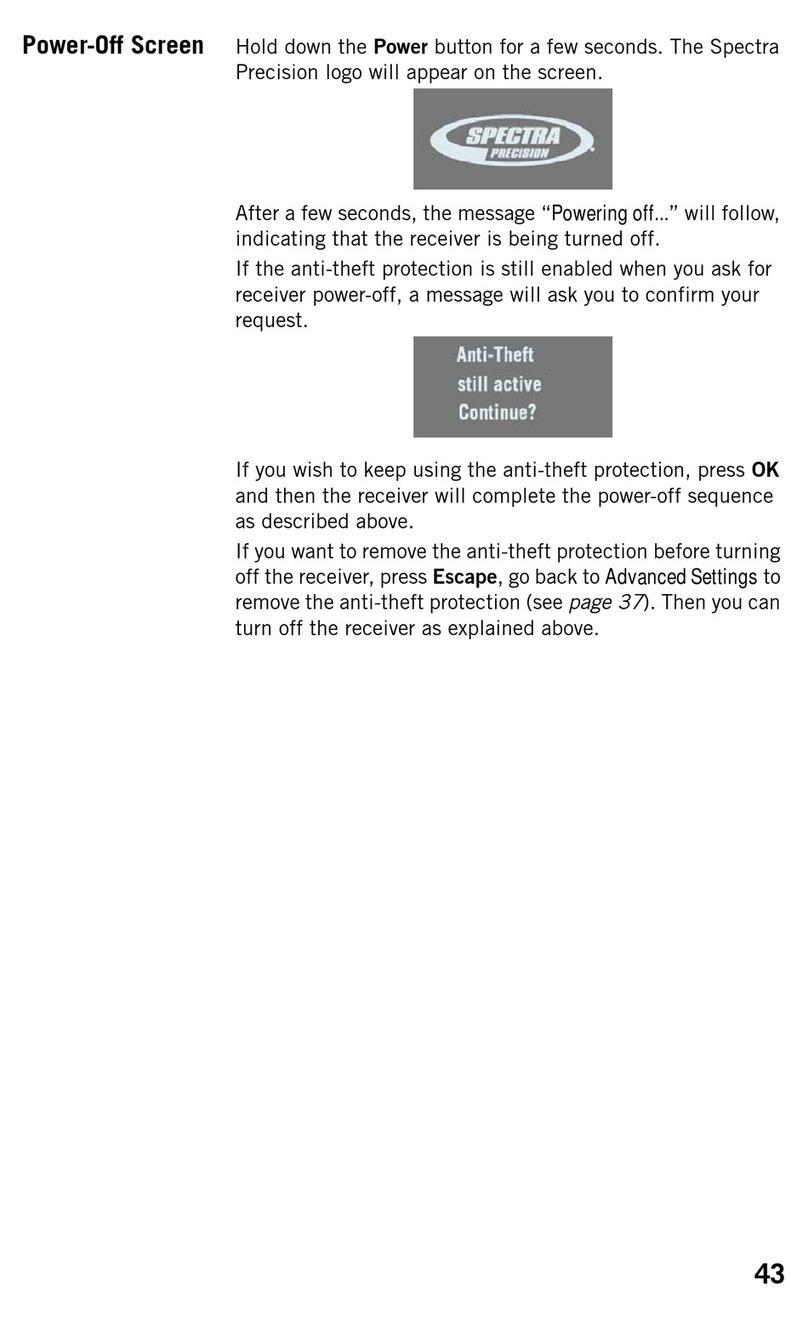
Spectra Precision
Spectra Precision SP90m User manual
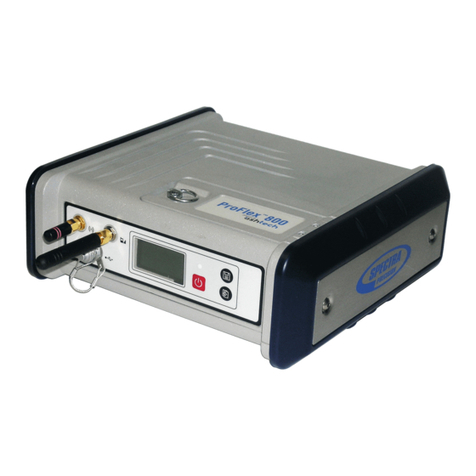
Spectra Precision
Spectra Precision ashtech ProFlex 800 CORS User manual
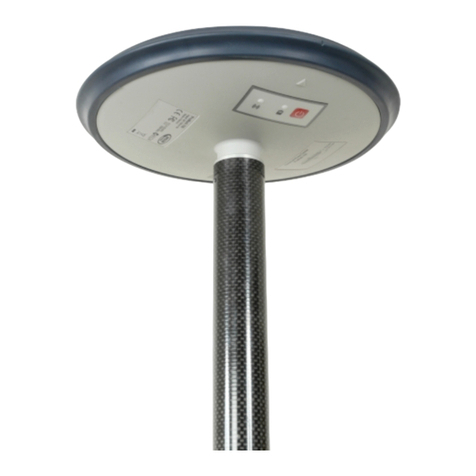
Spectra Precision
Spectra Precision ProMark 700 User manual

Spectra Precision
Spectra Precision SP90m User manual

Spectra Precision
Spectra Precision EPOCH 35 User manual
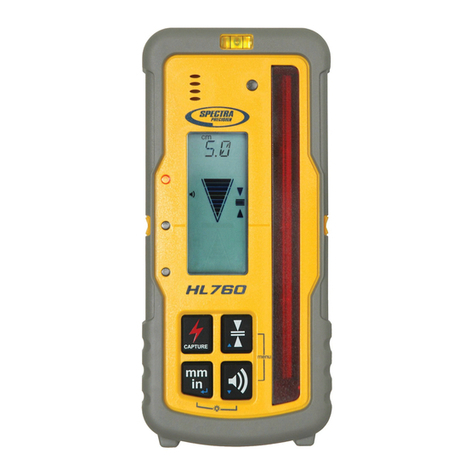
Spectra Precision
Spectra Precision HL760 User manual
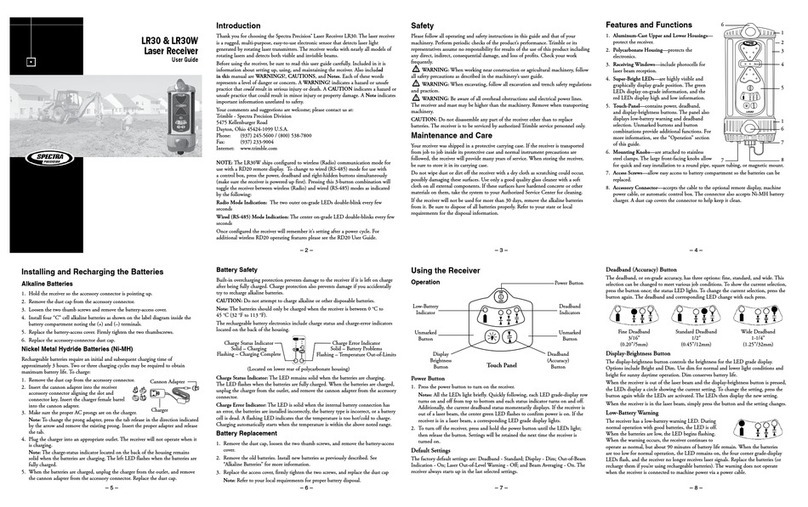
Spectra Precision
Spectra Precision LR30 User manual
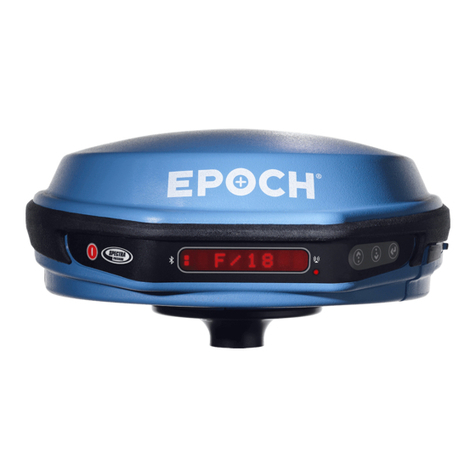
Spectra Precision
Spectra Precision EPOCH 35 User manual
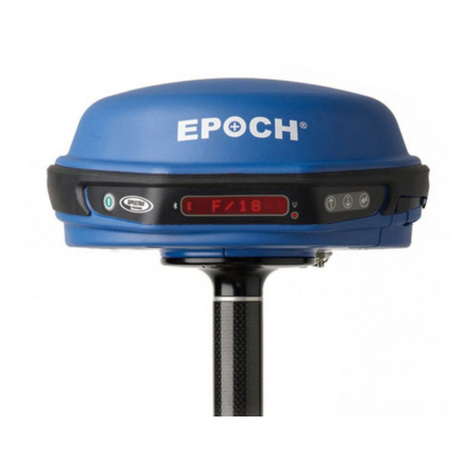
Spectra Precision
Spectra Precision EPOCH 50 User manual

